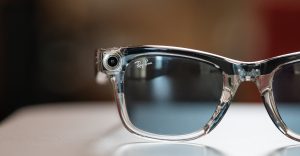How dog DNA could be used to improve the health of our pets — and us
Hundreds of different dog breeds exist today — one for everyone’s taste. I love big dogs like German Shepherds and Goldendoodles, but I’m not a big fan of Chihuahuas and Shih Tzus. But where did all these breeds come from in the first place? How were they created and when? A new study tries to answer all these questions.
Scientists at the National Institutes of Health analyzed the DNA of 1,346 dogs — representing 161 breeds — to assemble an evolutionary tree of man’s best friend. They looked at how breeds were crossed to add new traits, and how migration changed dog breeds. The researchers found some interesting stuff as a result. For instance, the new research shows that some modern dogs in the Americas likely descend from ancient dogs that lived with Native Americans. The study, published today in Cell Reports, also identifies genetic mutations that are associated with certain diseases that affect dogs and humans alike. The information can help improve the health of our best friends — as well as our own.
Humans and dogs have lived together for thousands of years — and not just out of unconditional love. We’ve bred dogs so they could accomplish particular tasks or play specific roles: some dogs helped us with hunting, others helped us with tending to our livestock or guarding our homes. More recently, we’ve bred smaller dogs that more easily fit in our tiny city apartments.
Photo by Dayna Dreger
“Each time we come up with different changes into our own sort of society and the way we live, then there’s room for a new kind of dog, or a new shape, a new size,” says study co-author and dog geneticist Heidi Parker at the NIH.
All these breeds belong to the same species, Canis familiaris. That means that, for the most part, dogs of any breed can mate and produce offspring — but they also have subtle genetic variants that determine which dog is small or big and which dogs have curly or long, black fur. By analyzing genetic data from all these different breeds, the researchers were able to see how, when, and where these breeds were formed.
Take the Peruvian Hairless Dog or the Xoloitzcuintle from Central America, for instance. Scientists have long known that dogs existed in the Americas well before the European settlers arrived. These ancient dogs traveled with humans across the Bering Land Bridge and lived with Native Americans, as well as other cultures in Central and South America. But it was mostly thought that this so-called New World Dog went extinct when Europeans introduced their own dogs, says Parker. Today’s study shows that some modern breeds in the Americas — like the Peruvian Hairless Dog, the Xolo, and the American Hairless Terrier — likely descended from the New World Dog. “There is still a New World signature,” Parker says. In short, the European dogs mixed with the native dogs, they didn’t replace them altogether. “That’s really exciting,” says study co-author and dog geneticist Elaine Ostrander, also of the NIH.
Photo by Penny Inman
The researchers found that herding breeds — dogs that were bred to tend to livestock — are very diverse. Even though these breeds are largely European in origin, there are very distinct groups from different regions: from the United Kingdom, from Southern Europe, Northern Europe, as well as Hungary in Eastern Europe. That means herding dogs were developed in different areas, probably at different times. “We could trace that whole development of this cluster of breeds,” Parker says.
The genetic analysis also led the researchers to pin down when exactly certain breeds were created, confirming certain accounts and old records kept by breeders through time. For example, the study shows that Bulldogs contributed to the creation of the Bullmastiff in the mid-1800s. But then in the 1940s and ‘50s, the Bullmastiff and the Mastiff were crossed again possibly to enlarge the Bullmastiff’s size.
Finally, the study was able to identify certain genetic mutations that are associated with disease in dogs and trace where those mutations came from. This information could be used by breeders to create healthier dogs — but it also has the potential to help humans. In fact, dogs get many of the same diseases we get, such as cancer, heart disease, and diabetes, so the animals are great models for many human diseases. By studying different breeds, the researchers can identify multiple disease-causing genes. Because the same mutations can play a role in human diseases as well, this is key information we need to study the human disease and find a potential cure. “Study after study tells us that disease genes found in dogs are revealing for human health as well,” says Ostrander. So the study represents “a wonderful opportunity for improving canine and human health.”
To gather all the genetic data, Parker and Ostrander went around dog shows and competitions, asking owners for a cheek swab or blood sample of their furry friends. They were able to collect DNA data from 1,346 dogs, but their goal is to get even more dogs from around the world, so they can get genetic information from many more breeds. At the heart of their research is a deep love for dogs, in all their shapes and sizes. “I’m a dog person through and through,” Ostrander says. She’s allergic to cats, in fact, and so is her daughter.
You may be interested
The Shawshank Redemption fans stunned by true story behind 'maggot' scene
admin - Apr 10, 2025[ad_1] A scene in The Shawshank Redemption sees a character feed a maggot to a crow, but the American Humane…

Michael Caine said 1969 classic is his favourite song of all time
admin - Apr 10, 2025[ad_1] A chance encounter in Paris led Sir Michael Caine to a song that would become iconic. Uncover the unexpected…

'Perfect' film from 1960s fans say is 'still relevant today' streaming free this weekend
admin - Apr 10, 2025[ad_1] A beloved classic movie is about to become available on BBC iPlayer. [ad_2] Source link
Leave a Comment
You must be logged in to post a comment.















